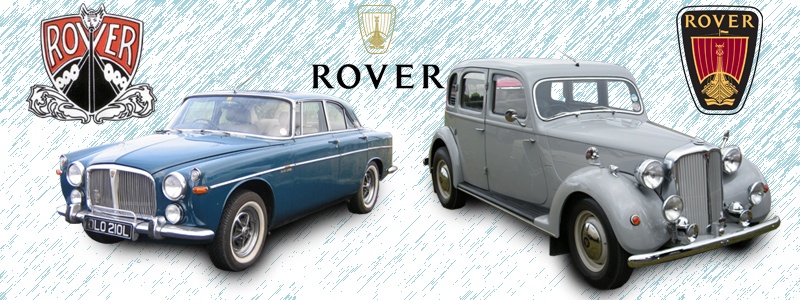 |
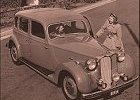 |
|
1948 - 1949
Tim Brownell in How to Restore your Collector Car (1984) wrote, "True 'Classics' are defined by the Classic Car Club of America as follows: fine or unusual. motor cars built between and including the years 1925 and 1948, distinguished for their respective fine design, high engineering standards and superior workmanship. Strictly speaking, classics are distinguished by special styling or mechanical features not found in run-of-the-mill cars." More>> |
 |
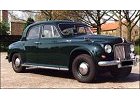 |
|
1954 - 1959
Conceived as a lower price alternative to the Rover 75, the Rover P4 (60) was fitted with a 2 litre four cylinder overhead inlet/side exhaust valve engine producing 60 bhp. More>> |
 |
 |
|
1963 - 1973
AFTER the experience of their strong efforts in international rallying, Rover took a bold step forward from their familiar image as manufacturers of the gentleman's auto when the 2000 was introduced in 1963. Instead, the accent was on the sportsman's saloon, so naturally only a manual 4-speed gearbox was fitted initially. More>> |
 |
 |
|
1967
AFTER the experience of their strong efforts in international rallying, Rover took a bold step forward from their familiar image as manufacturers of the gentleman's auto when the 2000 was introduced in 1963. Instead, the accent was on the sportsman's saloon, so naturally only a manual 4-speed gearbox was fitted initially. More>> |
 |
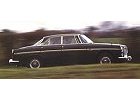 |
|
1967 - 1973
The Rover P5 3 Litre range had established itself as one of the best selling British luxury cars of the Sixties. By 1967 the 3 Litre was beginning to show its age and a new powerplant was needed, enter one the famous British engines of all time, the Rover V8. More>> |
 |
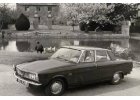 |
|
1963 - 1977
Rover announced one its most radical production designs in 1963, the Rover 2000.With futuristic looks, the body used an innovative "base unit" unitary bodyshell which then had unstressed body panels bolted onto it. More>> |
 |
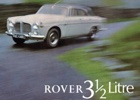 |
|
1967 - 1973
Perhaps the best thing about the Rover 3.5 V8 Saloon was that the designers decided to retain the traditional wood and leather luxury. The big leather seats with their enormous range of adjustment still had the Rover tang of sybaritic delight. More>> |
 |
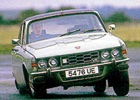 |
|
1968 - 1977
When the Rover Company announced in 1967 that they had bought the patterns, jigs and rights for the Oldsmobile alloy 3.5 litre V8, many enthusiasts looked at each other knowingly and at the Rover 2000 as the recipient of the "new" power-plant. More>> |
 |
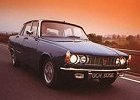 |
|
1968 - 1977
Rover introduced the V8 version of the P6 in April 1968 as the Three Thousand Five saloon, a designation it would carry until late 1970 when it became known as the 3500. More>> |
 |
 |
|
1976 - 1986
The Rover 3500 V8 represented a major advance on its predecessors. The David Bache designed hatchback was well situated in performance, looks, and economy, and helped bring back perhaps some lost prestige and desirability to the famous British marque. But what made the 3500 so great was that, while broadening Rover’s appeal to other buyers, it never alienated the traditional Rover die-hards. More>> |
 |
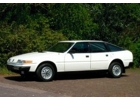 |
|
1977 - 1986
To many people it seemed strange that Rover should have bothered to produce two smaller engined versions of the 3500 - and many thought the 2600 alone would have served to capture sufficient customers down-market from the 3500. In truth the 2300, while certainly not really slow or laboured, did lack the flexibility of the 2600, and road testers of the time often commented that the class of the car was somewhat compromised. More>> |
 |
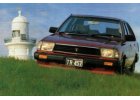 |
 |
1981 - 1985
Quality components were used throughout, typical of the Honda quality at the time. A Pioneer stereo cassette/radio was standard, as was timber trim, although the latter was pretty obviously only a veneer. The seats were well shaped and finished in a Moquette cloth trim, they complementing the wonderfully supple ride of the larger Civic. More>> |
 |
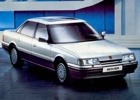 |
 |
1986 - 1988
What was happening to Rover in the mid 1980s? The company was remembered for being one of the first to get an experimental automotive gas turbine up and running with the T3 coupe in 1956, and it made a big impact on world car design with the introduction of the brilliant Rover 2000 model in the 1960s, which featured de Dion rear suspension and advanced body design. More>> |




